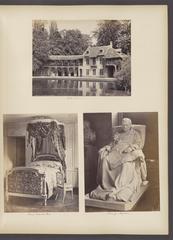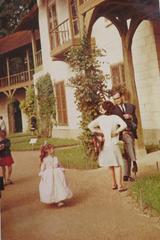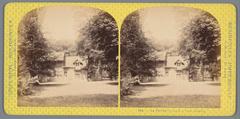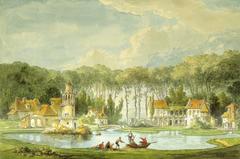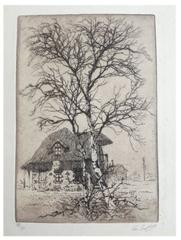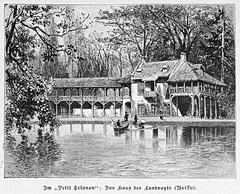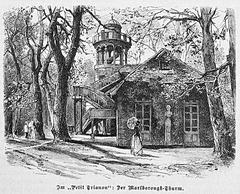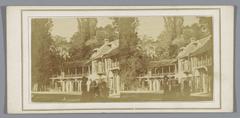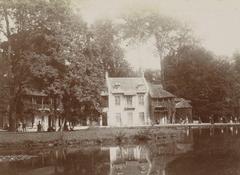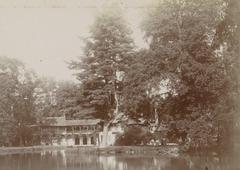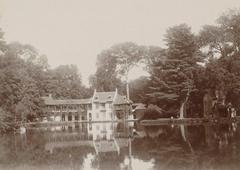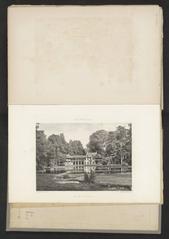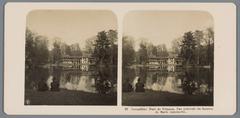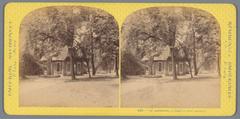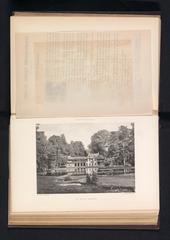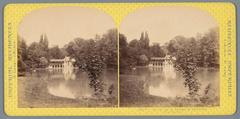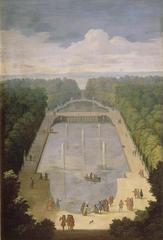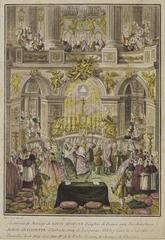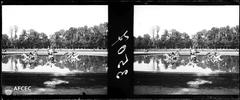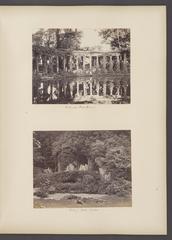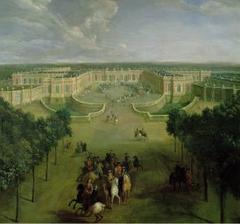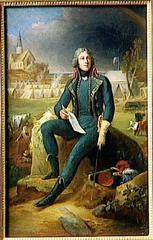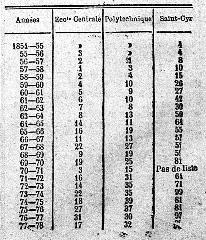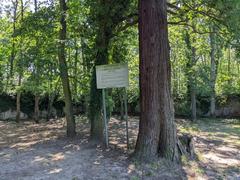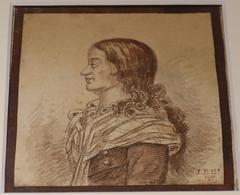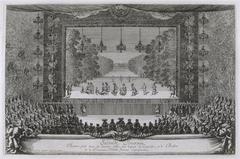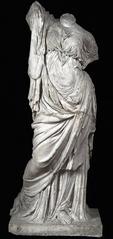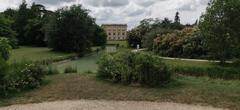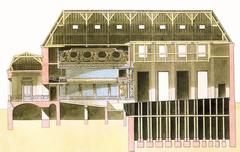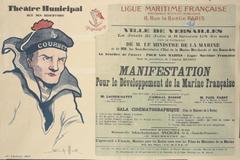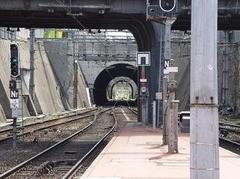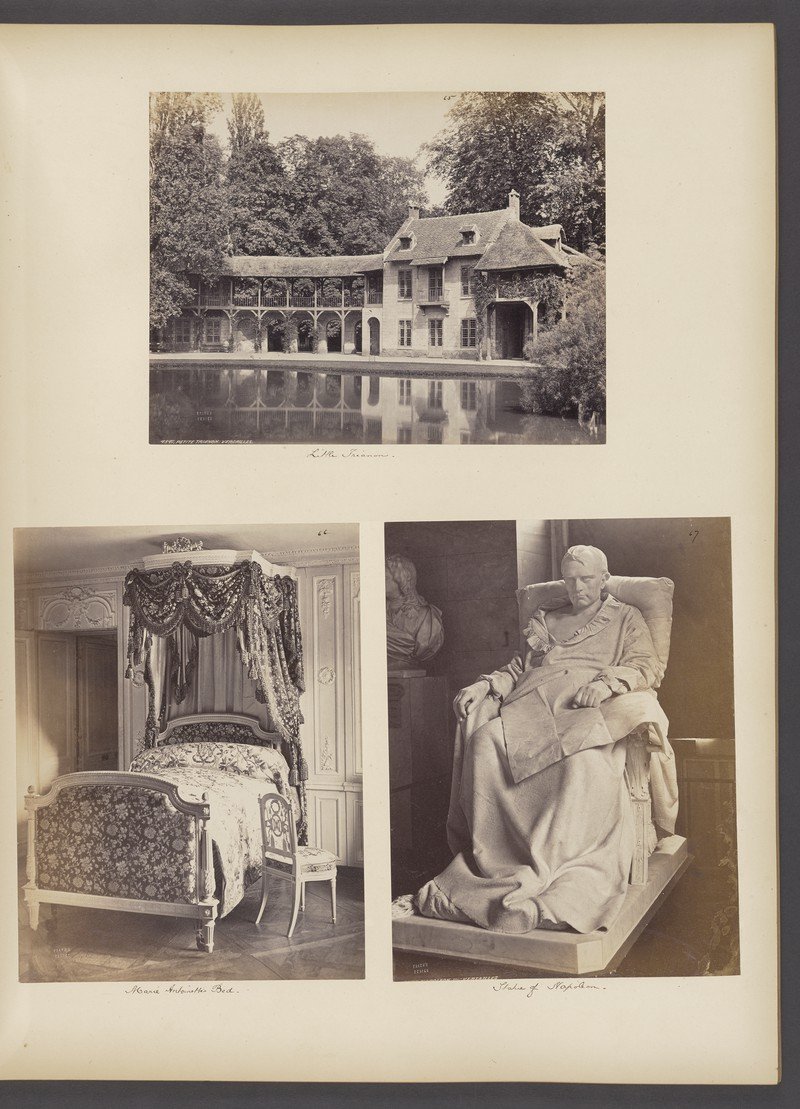
Hameau de la Reine, Versailles: Visiting Hours, Tickets, and Travel Guide
Date: 14/06/2025
Introduction: Why Visit the Hameau de la Reine?
Tucked away in the lush estate of Versailles, the Hameau de la Reine (Queen’s Hamlet) is one of France’s most atmospheric historical sites. Commissioned by Marie Antoinette in 1783 as a private retreat near the Petit Trianon, the hamlet blends rural charm with royal luxury. Designed to mimic a Norman village, it offered the queen an idyllic escape from the strictures of court life and became a symbol of both Enlightenment ideals and royal escapism. Today, the Hameau’s picturesque cottages, gardens, and tranquil lake welcome visitors eager to step into the private world of Marie Antoinette and explore a unique piece of Versailles’ heritage.
This detailed guide covers everything you need to know: visiting hours, ticket options, travel tips, accessibility, and highlights—all to help you plan a memorable trip. For the latest updates and information, always refer to the official Château de Versailles website and trusted travel resources (travelyesplease.com, solosophie.com).
Historical Background and Architectural Highlights
Origins and Design
The Hameau de la Reine was conceived at the height of the 18th-century aristocratic fascination with pastoral life and Rousseau’s “return to nature.” Marie Antoinette tasked architect Richard Mique and painter Hubert Robert to design a rustic yet refined hamlet, complete with thatched cottages, a farm, dairy, mill, and an artificial lake (chateauversailles.fr). Their vision combined the simplicity of Norman vernacular architecture with surprising interior luxury.
Key buildings include:
- Queen’s House: The largest and most elegant, with Rococo interiors hiding behind a rustic façade.
- Billiard House: Connected to the Queen’s House by a flower-lined gallery, used for entertainment.
- Farm and Dairy: Working agricultural spaces that supplied the estate, managed for both function and display.
- Mill and Marlborough Tower: Picturesque features adding authenticity and whimsical character.
- Dovecote and Aviary: Provided eggs and poultry, enhancing the rural feel.
- Boudoir, Guardhouse, and Barn: Each serving distinct roles, from security to storage and festivities.
The layout around an irregular pond, winding paths, and English-style landscaping marks a transition from the formal gardens of Versailles to the naturalistic styles that influenced European landscaping for generations (lasourisglobe-trotteuse.fr).
Social and Cultural Context
The hamlet was Marie Antoinette’s sanctuary for intimate gatherings, where she and close friends could play at rural life and experiment with the latest ideas in farming. While it reflected Enlightenment values and a desire for authenticity, critics in pre-Revolutionary France saw it as an emblem of royal frivolity and detachment (versailles-visit.com). The site’s dual nature—as both an agricultural model and a stage for aristocratic escapism—remains central to its enduring fascination.
Restoration and Preservation
The hamlet suffered during the French Revolution and the 19th century but underwent major restorations in the 1930s and again from the 1990s onwards. These projects focused on structural repairs, returning interiors to their 18th-century appearance, and reviving the farm’s operations. Conservation remains ongoing, balancing authenticity with visitor access (solosophie.com; academia.edu).
Essential Visitor Information
Visiting Hours
- From April to October: 12:00 pm – 6:30 pm (last entry ~45 minutes before closing)
- From November to March: Closed or reduced hours (always check the official Versailles website)
- Closed: Mondays and May 1st
Tickets and Prices
- Passport Ticket: Full access to Palace, Trianon Estate, gardens, and exhibitions (chateauversailles.fr)
- Trianon Estate Ticket: Entry to Grand Trianon, Petit Trianon, and Hameau de la Reine
- Free Admission: Under 18s, EU residents under 26 (Versailles Chateau)
Buy tickets online in advance to avoid queues.
Accessibility
Paths are mostly gravel and grass, so some areas may be challenging for wheelchair users. Main paths are accessible, and assistance is available upon request. For detailed accessibility information, consult the official website.
Getting There
- Train: RER C from Paris to Versailles Château Rive Gauche; 10–15 min walk to the palace, then 20–30 min through gardens to the hamlet (Wandering Why Traveler)
- Bicycle: Rentals available; efficient for exploring the vast estate (World in Paris)
- On Foot: Be prepared for significant distances (France Travel Tips)
- Electric Carts: Available for rent, with some restrictions (World in Paris)
Facilities
Restrooms and picnic areas are located near Petit Trianon and at main estate points. Minimal facilities within the hamlet itself—plan ahead.
Guided Tours and Events
- Guided Tours: Access to interiors (e.g., Queen’s House) is by guided tour only, usually in French; check for English tours in advance (World in Paris).
- Special Events: Musical fountain shows, evening spectacles, and historical reenactments occur seasonally; separate tickets and advance booking may be required (Wandering Why Traveler).
Practical Travel Tips
- Best Time to Visit: Spring and summer for gardens in bloom and lively farm scenes. Early morning or late afternoon for best light and fewer crowds.
- What to Bring: Comfortable shoes, water, sun protection, and a camera.
- Picnicking: Allowed in designated areas—bring supplies for a relaxing break.
- Pets: Dogs allowed on leashes in gardens, not inside buildings.
FAQ
Q: What are the Hameau de la Reine visiting hours?
A: 12:00 pm – 6:30 pm, closed Mondays and May 1st. Gardens open from 7:00 am (Château de Versailles).
Q: How do I get tickets?
A: Buy online via the official website. Passport or Trianon Estate tickets include the hamlet.
Q: Is it accessible for wheelchairs?
A: Main paths are accessible; some areas may be uneven.
Q: Are guided tours offered in English?
A: Primarily in French—check ahead for English tours or use the Versailles app.
Q: Can I bring pets?
A: Leashed dogs permitted in gardens, not inside buildings.
Nearby Sights
- Petit Trianon: Marie Antoinette’s neoclassical residence.
- Grand Trianon: Elegant marble palace and gardens.
- Temple of Love: Romantic neoclassical folly near the hamlet (Wandering Why Traveler).
Visuals and Virtual Resources
Enhance your experience by exploring the virtual tours and image galleries on the official Versailles website. Optimized images with alt tags such as “Hameau de la Reine thatched cottages at Versailles” or “Queen’s Hamlet gardens and lake” help with both trip planning and SEO.
Essential Contacts
- Address: Domaine de Marie-Antoinette, Château de Versailles, Place d’Armes, 78000 Versailles, France
- Phone: +33 1 30 83 78 00 (Château de Versailles)
- Official Website: chateauversailles.fr
Summary: Maximizing Your Visit
The Hameau de la Reine is a rare window into Marie Antoinette’s private world and the era’s cultural trends. Its architecture, gardens, and working farm offer insights into Enlightenment-era ideals and the artistry of pre-Revolutionary France. Careful planning—checking hours, booking tickets, considering guided tours, and preparing for accessibility challenges—will ensure a rewarding and memorable experience. For the most current information, always consult the official Versailles website.
Sources
- TravelYesPlease: Visiting the Hameau de la Reine
- La Souris Globe-Trotteuse: Hameau de la Reine at Versailles
- Solo Sophie: Hameau de la Reine Guide
- World in Paris: Hameau de la Reine Visiting Tips
- Château de Versailles Official Website
- Academia.edu: The Hameau de la Reine and Vernacular Architecture
